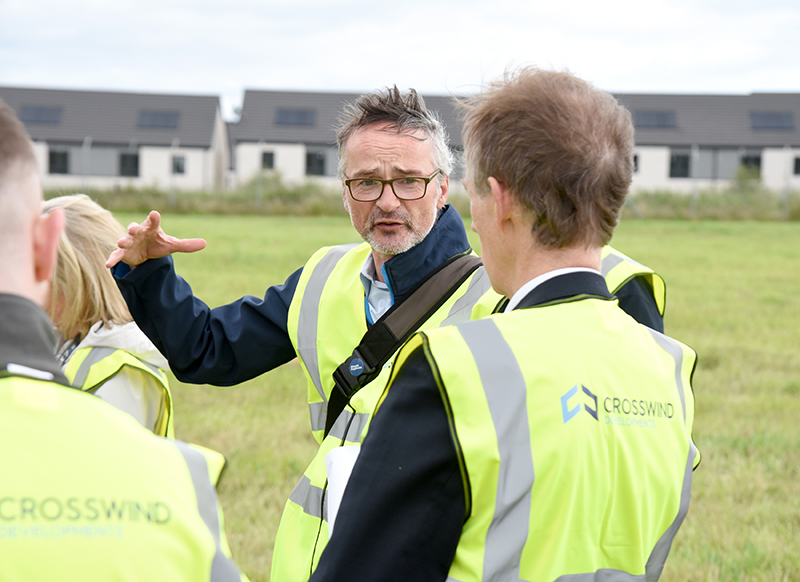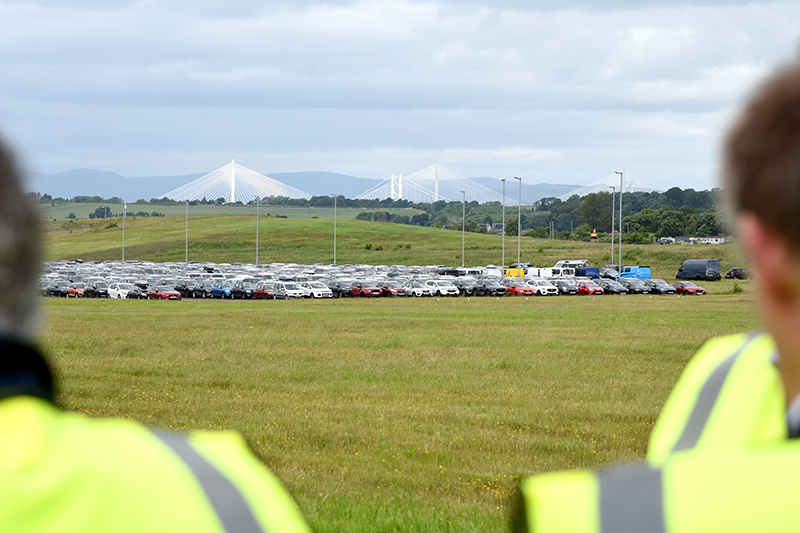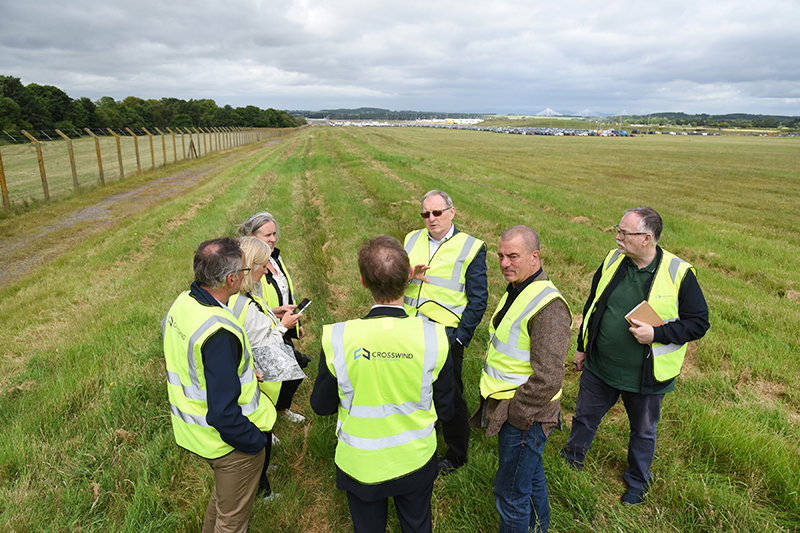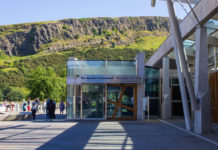
CROSSWIND Developments has revealed its faith in the Scottish construction sector’s ability to deliver and embrace the ambition behind a proposed landmark mixed-use project to the west of Edinburgh.
The developer is behind £1 billion plans for Elements Edinburgh, which would see the build of 3,000 homes, a school, shops, and offices at a 72-acre brownfield site by Edinburgh Airport.
Providing Project Scotland with a guided tour of the site, Crosswind project director David Kelman revealed that an estimated 4,000 jobs and training opportunities will be created, should the plans receive the green light later this year.
Previously Edinburgh Airport’s 12/30 runway, which has been disused since 2018, the site is awaiting planning permission to be transformed into the new community that ‘prioritises people, inspires businesses, and enriches its environment’.
Alongside the new homes, which will comprise a mix of flats and houses, the development will feature 1,020 hotel beds, 100% renewable energy, a district heat network, a 4.5ha park, and 10km of active travel routes all set within a walkable, 20-minute neighbourhood setting – with 52% of the site being public space.
“What we’re trying to do is design for the transport that we want to have – not the transport we currently have,” David explained. “There’s been decades of development dictated by road capacity planning and we’re trying to move away from that.”

Critical to this is the Edinburgh Gateway tram stop, located just 300m from the site, with David adding that it would be a ‘missed opportunity’ for the capital not to create developments along the length of the tramline.
“I think we need a combination of carrot and stick – you need to show people that there are attractive alternatives to cars,” he continued. “As the quickest way into the city and beyond all the way down into Leith and Newhaven, it’s (the tram) huge. It’s probably more important for people who are coming to the site for the hotels and offices, but it’ll also play its part for people living there who are then commuting outwith the site.”
Inspiration for the ‘car-lite’ and community-focused approach has been taken from schemes in the Netherlands and Scandinavia, where residential builds are increasingly extending beyond just housing – with emphasis on public and active travel, green space replacing what would ordinarily be carparking spaces, and retail offerings.
“We have very few local neighbours, so I’ve rarely seen so few objections for a development,” David replied, when asked how locals are have reacted to the proposals. “The most common feedback we get is ‘that’s great, there’ll be more housing’. It’s also open, quality greenspace that’s currently inaccessible – so to make that accessible literally on their doorstep is a huge plus.”
Plans were first submitted in February, just three months on from the City of Edinburgh Council becoming the first local authority in Scotland to declare a housing emergency. With 3,000 homes earmarked for the site, it’s hoped that the strain can be lessened.
“Every house of any type that we build helps,” David added. “Whether it’s rented, high-end, mid-market, housing association, BTR – any living accommodation helps the numbers one way or another and I think we have to focus on building as many houses as we can. However, if all we build is houses then we’re not creating communities, so we need to do it in a sustainable way and trying to get the balance right is the challenge.”

Alongside shared greenspace and retail offerings, a focus on creating a mixed-generation development will also be key to creating a community at Elements Edinburgh. Many of the blocks of flats will contain homes suited to different needs, meaning residents won’t have to move out of the area if their circumstances change.
“Studies show that there are health benefits for the elderly when interacting with the young and that’s seen at a local level when grandparents look after young children,” David said. “That can be expanded in the community or neighbourhood context.”
The immediate next steps include securing planning permission, which is hoped to be achieved in August or September, before contractors are appointed and enabling works get underway on what will become Edinburgh’s first 20-minute neighbourhood.
“That’s not our aim, but it would be great if it did,” David replied, when asked if he thinks Elements Edinburgh will act as a blueprint for future builds. “We’re just trying to do the right thing and we’re conscious of a legacy to our past chairman, Alistair Darling, so we’re trying to do the right thing and deliver something future generations can be proud of.”







